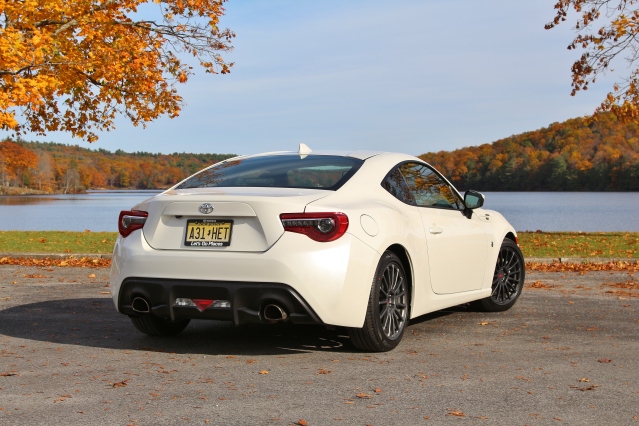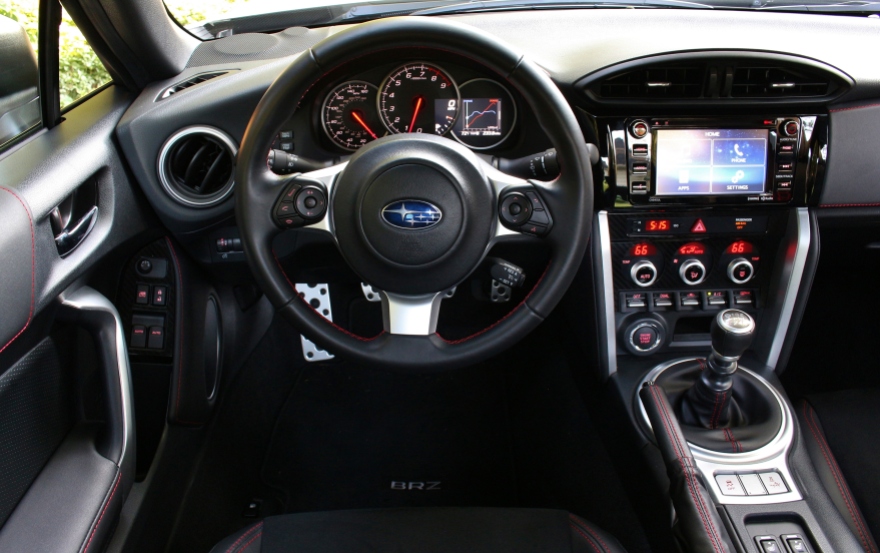Critics love to say the Subaru BRZ and Toyota 86 are slow and under-powered. They discredit it entirely on those points. But power and acceleration are just one measure. The car, as we know it, has evolved to become faster and more powerful than ever. Despite this, not every car built in this modern world is enjoyable to drive. Newer cars are more insulative and disconnected. They shelter us from the driving experience, yet they paint their brake calipers and manufacture fake engine noise for the cabin. Some even attempt to drive for us. The Subaru BRZ and Toyota 86 are the antithesis of these new cars. They are machines that very much require and respond to an operator. There’s something earnest and endearing in that simplicity. It’s why I’ve kept coming back for more.
These are the 4th and 5th versions of this car that we’ve tested here at Limited Slip Blog. It began in 2013 with the Scion FRS. The following winter, we tested a 2014 Scion FRS Automatic. In 2015, we spent a week with the Subaru BRZ Series.Blue. Since then, some things have changed. Scion has been folded back into Toyota, leaving us with the internationally-branded Toyota 86. More notable, however, are the updates to the platform. Revised shock tuning and spring rates subtly change the handling of the car. Cars equipped with the 6-speed manual transmission also get a re-geared rear differential (up from 4.10 to 4.30) and a slightly revised engine mapping to eek out 5 more horsepower and torque. The combined changes result in a slightly more responsive and rev-happy BRZ and 86. But there are more individualized changes that help to separate these two specific cars.
For 2017, Subaru updated the appearance of the BRZ with a revised front bumper, added rear spoiler, and LED lighting. Also new for this year, an optional Performance Package is available on the top-trim BRZ Limited with the 6-speed manual transmission. The package adds SACHS shock absorbers, wider wheels, and Brembo brakes for sharper dynamics. It definitely firms up the ride, but the biggest difference is felt in the BRZ’s brake pedal. The bite and brake feel are both noticeably improved. With the new brake confidence, however, comes a large amount of brake dust. The BRZ’s unique wheels were covered in dust by the end of the week.

Inside, a new 4.2-inch LED screen in the instrument cluster displays vehicle and performance information. It detracts from the retro vibe of the original cluster, but it does have a neat dyno chart that shows real-time engine output based on RPM. Regardless, the interior of the BRZ is not the focal point. When you focus on driving, and only driving, the BRZ is a joyful car. Let the engine run out into its upper rev range, hold firm to the well-weighted steering wheel, and change gears confidently with the well-placed gear lever. You get everything you put into the car back out. It’s extremely forgiving if you make a mistake or push past the car’s limits. The Performance Package adds an extra bit of sharpness to the BRZ’s handling without impacting ride quality.
Toyota’s rebranding of the FRS brings about several changes of its own, a host of 86 badging notwithstanding. A new front bumper and LED lighting brings an angrier demeanor to the little car. Around back, a revised rear diffuser sets the car apart from other versions. Inside, a new steering wheel and seat fabric help switch things up a bit, as well. The big news here is that Toyota has bolted nearly $4,000 worth of TRD performance accessories to our tester. Multi-spoke TRD wheels match the same wider 17×7.5 profile of the BRZ Performance Package. Lowering springs drop the ride height by nearly an inch and stiffer front and rear sway bars reduce body roll. Finally, the performance exhaust adds a deeper, sportier sound to the BRZ.

Toyota’s TRD performance accessories may have taken it a bit too far. The changes make this particular car noticeably harder and louder than any other version we’ve sampled, to the point of near discomfort. While you can push the 86 harder, ride quality on regular roads has decreased dramatically. And while the exhaust system changes the 86’s sound for the better, it also resonates in the cabin. Along with the revised rear differential gearing, resulting in higher final-drive RPM, the 86 drones relentlessly on the highway. While there’s fun to be had here, this 86 is best suited for track and autocross days. The stiffer tuning pays dividends with rapid direction changes, but becomes tiresome on long drives. The right mix of performance-enhancing accessories is out there, but combining all of them left us wishing our tester was a few thousand cheaper and a few notches softer.
There’s nothing false about the Subaru BRZ and Toyota 86. You get exactly what you expect, nothing more and nothing less. It’s open and honest about its capabilities, sharing each and every moment with you. It will let you explore the limits safely and enjoyably, teaching you how to be smoother, more precise, and ultimately faster. You don’t need more power. Power is the modern solution to making cars feel alive. The retro vibe of the BRZ and 86 doesn’t need any modernization. They just need someone who can enjoy the drive.
-Christopher Little
| 2017 Subaru BRZ Limited |
$27,645 |
| Performance Package | $1,195 |
| Destination Charges | $820 |
| As Tested MSRP | $29,660 |
| 2017 Toyota 86 |
$26,255 |
| Special Color | $395 |
| 17″ TRD Wheels – Matte Grey | $1,650 |
| TRD Exhaust System | $1,100 |
| TRD Sway Bar | $550 |
| TRD Lowering Springs | $639 |
| All-Weather Floor Mats | $90 |
| Destination Charges | $865 |
| As Tested MSRP | $31,544 |
Related:
Opposites Attract: Ford Fiesta ST vs. Subaru BRZ
Beginning to End: A Driver’s Progression
Categories: Christopher Little, Driven, Subaru, Toyota







































2 replies »